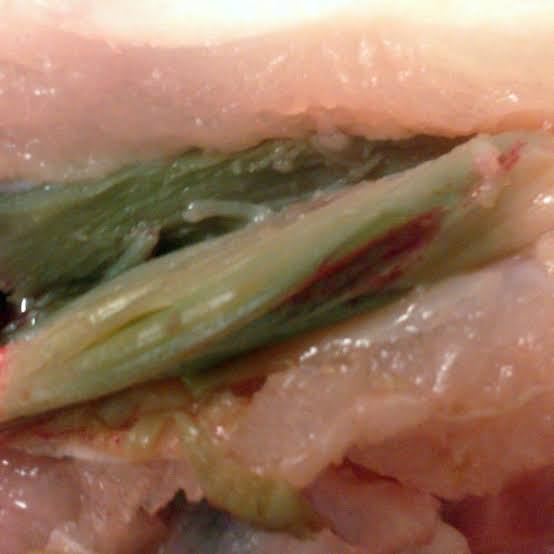Causes of green muscle disease in your broilers and how to address it
Retailers and consumers of broiler meat are experiencing a greenish appearance on their poultry meat during processing. As consumers become conscious about their health, it is only right that we shed more light on this condition called green muscle disease.
 Learn More
Learn MoreAlso called Deep Pectoral Myopathy (DPM), it affects the inner pectoral (breast) muscle in broilers, green muscle disease is an economically important condition in broiler meat birds. The breast muscle is the most expensive part of the bird, and the loss of the breast muscle will impact the profit of the business. Despite the name ‘disease’, green muscle disease is NOT caused by infection but by management factors. It arises from a loss of blood supply to the inner breast muscle.

How it develops
The breast muscles of broilers consist of the outer larger muscle and the inner smaller muscle. The inner breast muscle is surrounded by the sternum keel and pectoralis major. The inner muscle has an outer muscle covering and does not have room to expand. The inner breast muscle allows the bird to perform up-and-down flapping of the wings. Routine wing flapping that is not vigorous does not pose any risk to the inner breast muscle. However, rapid, continuous wing flapping results in extra blood flow to the inner breast muscle. Now, since the inner breast muscle cannot expand, the extra pressure exerted on the muscle by the increased blood supply cuts off the blood supply to the muscle, and the muscle ‘dries’ up or dies.
READ ALSO 9 things to do when you are let down by your farming inputs suppliers
How it is diagnosed
The disease does not cause any clinical signs in live birds. The issue is noted in the kitchen or plant during processing. Breast muscles affected by the disease do not turn green immediately; they take 5-7. This means the disease arises on the farm and is diagnosed at the point of slaughter.
How it affects businesses
Farmers place the highest priority on supplying quality products. No consumer will want to eat discoloured chicken meat; therefore, such meat is usually rejected. Secondly, consumers will avoid such products, and they may distribute images and information that are negative for the farmer.
READ ALSO How to Identify Sick Animals and 10 Signs to Watch Out For
Third, such birds with green muscle disease are downgraded, and the affected muscle is discarded; hence, the losses.
Fourth, the farmer will in turn have a short supply of breast meat to customers due to the discarded parts of affected birds, and that is a loss.
Preventing the disease.
The disease arises due to vigorous wing flapping, the best prevention is to adopt management practises that minimise wing flapping in the broiler flock. These include:
ATTENTION: Click “HERE” to receive More updates directly on your WhatsApp!
Ensure birds have access to feed and water since withdrawing feed or water means birds scramble for it when it is available.
Litter turning should be done in a gentle manner to acclimatise the birds.
Avoid having bright lights, this increases the activity levels of birds and wing flapping.
Walk slowly in the broiler shed to minimise the panicking of birds
minimise noises around the broiler unit.
Buld broiler shed away from busy roads.
Practise gentle bird handling during weighing.
If depleting the flock over a few days, catching of the first batches should be done gently. Raise feeders and drinkers slowly.















